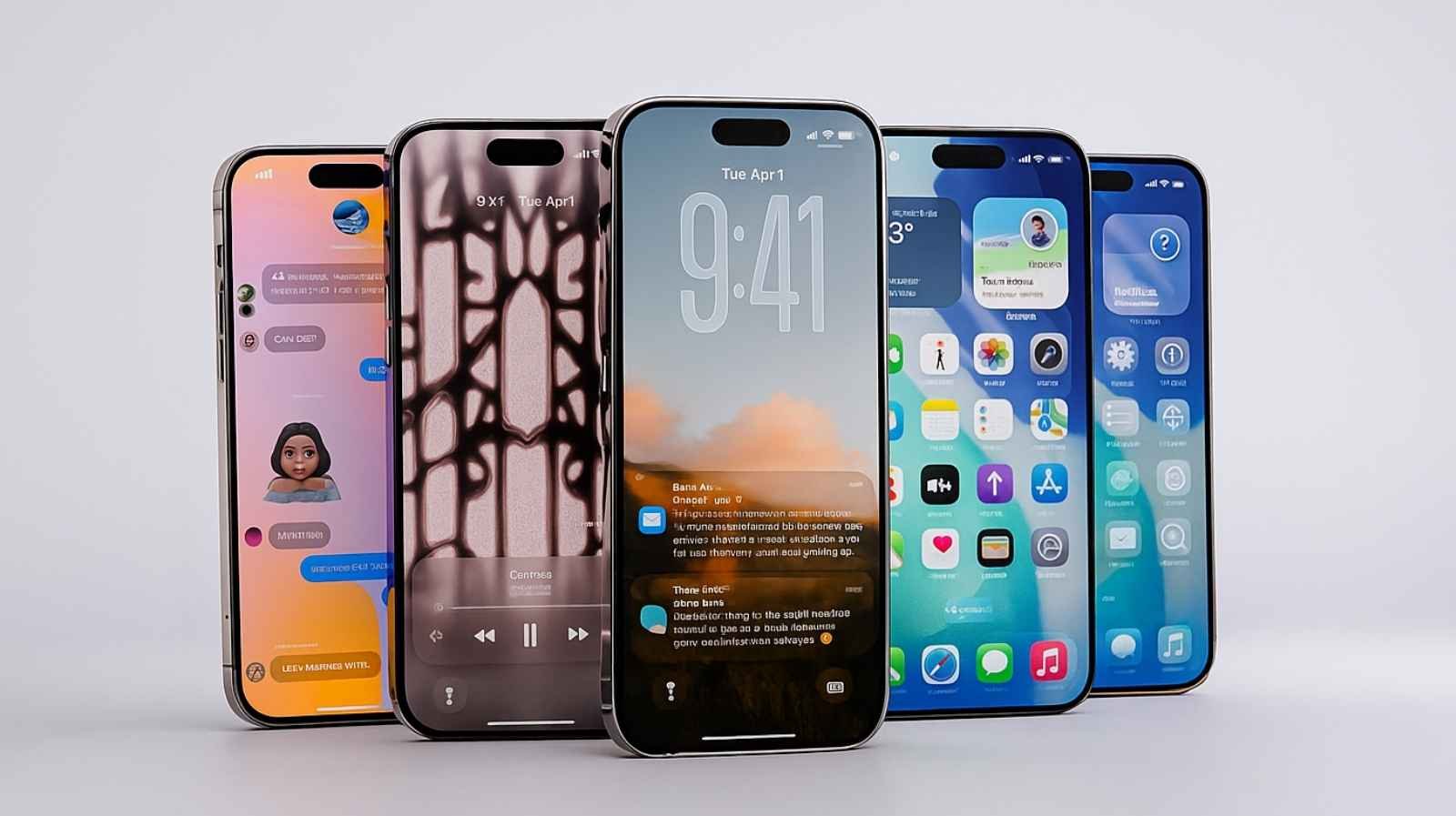Apple’s iOS 26 Public Beta Unveils Stunning Liquid Glass Design
Apple’s iOS 26 public beta introduces a revolutionary Liquid Glass design, transforming iPhone interfaces with vibrant visuals and enhanced functionality. From revamped apps to on-device AI, explore how iOS 26 redefines user experience and sets the stage for the iPhone 17.

Highlights
- iOS 26 public beta features Liquid Glass design, a major UI overhaul since 2013.
- Enhanced Phone and Photos apps with on-device AI for translation and editing.
- Public beta available now, with full release expected alongside iPhone 17.
Apple has launched the public beta for iOS 26, introducing its much-anticipated Liquid Glass design, a visual and functional overhaul not seen since iOS 7 in 2013. Announced on X, this update reimagines the iPhone’s user interface with a sleek, translucent aesthetic that blends vibrant colors and dynamic animations. The public beta, available to users enrolled in Apple’s Beta Software Program, offers a glimpse into the future of iPhone software, setting the stage for the iPhone 17 launch later in 2025.
What is Liquid Glass Design?
The Liquid Glass design is Apple’s boldest UI refresh in over a decade. It introduces a glass-like, semi-transparent interface where app icons, widgets, and menus appear to float above the background. According to Apple’s release notes, the design uses advanced rendering techniques to create a sense of depth, with animations that respond to user interactions. The home screen now supports customizable icon shapes and sizes, allowing users to personalize their layouts like never before. Early testers on X have praised the design for its fluidity and visual appeal, though some note a learning curve for new gestures.
Revamped Apps and Features
iOS 26 doesn’t just look different—it’s packed with functional upgrades. The Phone and Photos apps have been overhauled with on-device AI capabilities. The Phone app now supports live translation during FaceTime and voice calls, making cross-language communication seamless. The Photos app introduces AI-driven editing tools, such as object removal and style transfers, rivaling professional software like Photoshop. These features leverage Apple’s Neural Engine, ensuring privacy by processing data locally.
Performance and Compatibility
The public beta runs on devices as old as the iPhone 12, though performance is optimized for newer models like the iPhone 16 series. Apple claims iOS 26 improves battery efficiency by up to 10% through smarter resource management. Testers report smoother animations and faster app launches, thanks to under-the-hood optimizations. However, some users on older devices have noted occasional bugs, typical of beta software, which Apple is expected to address before the final release.
Preparing for iPhone 17
iOS 26 is designed with the iPhone 17 lineup in mind, which rumors suggest will feature ProMotion 120Hz displays across all models. The Liquid Glass design complements the rumored hardware upgrades, including slimmer bezels and a new A19 chip. Posts on X indicate that the iPhone 17 Pro and Air models will fully showcase iOS 26’s capabilities, with features like dynamic wallpapers that shift based on time or weather.
User Feedback and Adoption
Early adopters are buzzing about iOS 26’s customization options, which rival Android’s flexibility while maintaining Apple’s polished ecosystem. The ability to resize widgets and create multi-layered home screens has been a hit, though some users find the new design overwhelming. Apple’s support forums suggest that the company is actively collecting feedback to refine the experience. The public beta is free to download, but Apple warns users to back up their devices due to potential instability.
Challenges and Expectations
While iOS 26 is a leap forward, it’s not without challenges. The beta has faced criticism for minor glitches, such as app crashes and notification delays, which are common in early releases. Apple’s aggressive push for on-device AI also raises questions about compatibility with older devices, as some features are exclusive to newer chips. Still, the update’s visual flair and performance improvements make it a significant milestone.
What’s Next?
The full iOS 26 release is expected in September 2025, alongside the iPhone 17 lineup. Apple is likely to roll out additional beta updates to iron out bugs and introduce minor features. For now, the public beta offers a tantalizing preview of Apple’s vision for the future, blending style, functionality, and AI innovation. If you’re ready to dive in, enroll in Apple’s Beta Software Program and experience Liquid Glass for yourself.
